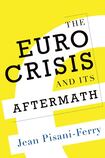
Four years ago, just as the rest of the world seemed to be recovering from the great financial crisis, the euro area stumbled. The crisis epicentre had shifted across the Atlantic. But why? What exactly went wrong with the euro during 2010-13? This is the question addressed by Jean Pisani-Ferry in this well-informed and well-argued book.
It is a story of decisionmakers scrambling to improvise solutions for problems that were emerging on a scale inadequately anticipated in the design of the euro regime and of its governance. Choosing optimal solutions was hampered by the rigidity that had been built into the system and by the difficulty of reconciling the sharply diverging interests of different countries. "Conflicting objectives and antagonistic constraints kept Europe in a state of confusion for a protracted period," writes Pisani-Ferry, a close observer of European economic policymaking over the past several decades.
Many of the architects of the single-currency project in the 1970s and 1980s saw it as a building block for a federal Europe. But, as Pisani-Ferry points out, by the time the system was up and running the momentum behind that aspiration had been exhausted, and the euro project seemed more technocratic, merely an attempt to remove currency and inflation worries from the European political space.
This distancing from politics implied a strongly rules-based governance structure and a firm commitment to having no cross-border bailouts of one government by the others. It also had the consequence of precluding safety valves that could have enabled the system to cope with large macroeconomic imbalances. (As the author puts it, governments had put themselves at risk of no longer being able to count in extremis on the support of a central bank: the treaty now expressly tied the hands of the central bank in this regard.)
Story of neglec
t
Of course the architects had not imagined that things could ever get so badly out of hand in the new system. And indeed matters could have worked out well enough had national economic management in the member states limited imbalances and other disturbances. But the lowering of interest rates brought about by the euro’s creation heralded a decade-long neglect of risks to macroeconomic stability.
Greece, Pisani-Ferry says, neglected the need to maintain proper government accounts; thus it became the "perfect culprit" for fiscal conservatives. The problems in other countries were also serious, and rather different. The narrative continues to describe Ireland and Spain neglecting to rein in their bankers, with France and Italy (here labelled "misfits") allowing their economies to lose competitive edge and dynamism. Meanwhile, like the dogs that did not bark, the financial markets neglected all of this and complacently provided whatever financing was sought in whatever part of the euro area that sought it. As for Germany, it was in a different situation. While others spent and saw rising wages, Germany (which was only gradually recovering from the strains of absorbing the eastern Länder) saved and held wages down.
As the macroeconomic imbalances in so many euro-area countries became more evident in the aftermath of the US-based crisis of 2008-9, financial markets began to recoil from the hard-to-assess risks emerging in countries that lacked the traditional safety valves associated with national currencies. Savers demanded ever-increasing spreads to compensate for these risks, or placed their savings elsewhere; investors postponed their plans, thereby slowing economic activity. Tipped into a second dip of recession and high interest rates, matters came to the point where the sustainability of the sovereign debt of a large segment of Europe was put in doubt.
Series of missteps
Pisani-Ferry takes us through the series of missteps that characterised the policy response to the crisis. The distinctive features of each of the country cases are well described: for Greece, the saga of its sovereign debt restructuring; for
Cyprus
, the bailing-in of bank deposits; for Ireland (as we well know) the opposite; as well as the way in which the loss of market confidence extended to Spain, Italy and beyond. Highlighting the diverse motivations of the policymakers, the author does a good job of dissecting the shortcomings of the policies adopted in each case.
In the author’s account, it becomes clear that, along with the lack of a sufficient sustained and coordinated euro- area-wide aggregate demand management response to the crisis, it was the failure to implement a coherent, clear and systematic approach to fiscal and banking bail-ins that condemned the euro area to an unduly prolonged slide in economic performance.
“Torn between two economically coherent solutions,” writes Pisani-Ferry of European leaders choosing in 2010 between imposing losses on the holders of Greek government debt or having the other European governments absorb the debt that Greece could not pay, “they chose a half-way compromise” that could not work.
And again, “caught between the rectitude of its principles and the vulnerability of its banking system, Germany decided to advocate virtue and discipline, while consistently pushing back their enforcement . . . It was much more comfortable . . . to pretend that Greece was solvent and would eventually repay its debts in full.”
The need to undertake running repairs on the system itself exposed sharp differences of approach between policymakers in the leading countries. Pisani-Ferry notes in particular the clash between the German preference for decentralised rules-based policy and the French tradition of centralised discretion.
Time and again financial markets reacted badly to the “vague and confusing declarations”, “always one day late and one euro short”, that substituted for prompt crisis management, as policymakers struggled to improvise solutions that would achieve the needed degree of international solidarity without implying the “transfer union” long dreaded in creditor countries.
Pisani-Ferry’s conclusion that Europe needs a new narrative to help build a deeper political community, restoring trust between governments and underpinning a governance structure that could overcome Europe’s “penchant for procrastination, its taste for half-baked compromises, and its propensity to reopen discussions after they had . . . been settled”, will resonate with many Irish readers.









